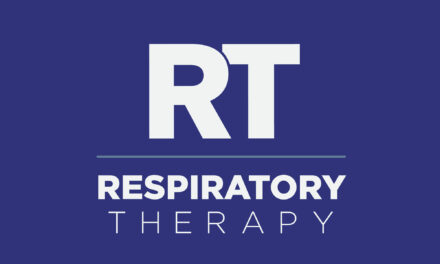Instead of opting to use one modality over the other for all patients, respiratory care practitioners are increasingly basing usage of active versus passive humidification on the clinical needs of each patient.
By Kathleen Fallon, RRT, Dräger
Mechanical ventilation is a critical tool in the arsenal of clinicians managing respiratory care, whether it is to ventilate a patient during surgery or provide longer-term respiratory support for critically-ill patients. Humidification of inhaled gases is the standard of care to support oxygen delivery and prevent lung damage. There are two main methodologies in practice: Active humidification, and passive heat and moisture exchangers (HME).
Today, active humidification requires a heated circuit and water chamber, while passive HME instead relies on the patient’s own breath to provide moisture. Clinicians have varied in their application of each type of humidification; sometimes relying more heavily on the active approach, and other times swinging the other way to the use of passive HME.
When COVID-19 initially broke out in the US, clinicians weighed the pros and cons of active versus passive HME humidification for mechanically ventilated patients. The American Association for Respiratory Care (AARC) clinical practice guidelines recommend replacing an HME with active humidification “if secretions become copious or appear increasingly tenacious.” [1]
While active humidification proved valuable for the management of the increase in secretions, concerns over aerosolizing the SARS-CoV-virus in the patients exhaled gas prompted healthcare organizations to turn to HME. [2]
Since an HME is a closed system, it is better at containing the virus compared with an aerosol generating active system. [3]
While necessity required the use of HME early on in the pandemic, this is no longer the case, prompting the questions: Is it time to rethink use of active versus passive humidification? Should there be a one-size fits all approach across all mechanically ventilated patients, or rather, is it time for a defined clinical criteria?
Passive Versus Active Pros and Cons
Different patient populations have very different needs; therefore, clinicians are taking a step back to evaluate humidification modalities based on disease process. Secretion management should be a front line question. Secretion changes are the first indication that an active approach to humidification is necessary.
Here are some advantages and disadvantages of each humidification method from an article published in the Open Respiratory Medicine Journal: [4]
Advantages
| Active | Passive |
| Universal application | Cost |
| Reliability | Passive operation |
| Alarms | User friendly |
| Wide range of temperatures and humidity | Removal of condensation |
| Temperature monitoring | Portable |
| Reaches the maximum absolute humidity |
Disadvantages
| Active | Passive |
| Cost | Does not apply to all patients |
| Using water | Increased dead space |
| Condensation | Increased resistance |
| Risk of contamination | Potential occlusion |
| Low possibility of electrical shock and burns | Misting problems |
| No filter |
Conclusion
Instead of opting to use one modality over the other for all patients, respiratory care practitioners are increasingly basing usage of active versus passive humidification on the clinical needs of each patient. By leveraging their knowledge and expertise, they are able to take a more customized approach to care delivery.
RT
Kathleen Fallon, RRT, is the senior marketing manager for Hospital Accessories and Consumables for Dräger.
References
- AARC Clinical Practice Guideline, Humidification During Invasive and Noninvasive Mechanical Ventilation: 2012, Respiratory Care, May 2012, https://www.aarc.org/wp-content/uploads/2014/08/12.05.0782.pdf
- Boston Medical Center COVID-19 Respiratory Guidelines, Airway and Oxygenation Guidelines for Persons Under Investigation (PUI) or Confirmed Positive for COVID-19, https://www.bumc.bu.edu/gimcovid/files/2020/04/COVID-19-O2-and-bag-Guidelines-Updated-4_14.pdf
- Boston Medical Center COVID-19 Respiratory Guidelines, Airway and Oxygenation Guidelines for Persons Under Investigation (PUI) or Confirmed Positive for COVID-19, https://www.bumc.bu.edu/gimcovid/files/2020/04/COVID-19-O2-and-bag-Guidelines-Updated-4_14.pdf
- Cerpa F, Cáceres D, Romero-Dapueto C, Giugliano-Jaramillo C, Pérez R, Budini H, Hidalgo V, Gutiérrez T, Molina J, Keymer J. Humidification on Ventilated Patients: Heated Humidifications or Heat and Moisture Exchangers? Open Respir Med J. 2015 Jun 26;9:104-11. doi: 10.2174/1874306401509010104. PMID: 26312102; PMCID: PMC4541464. https://pubmed.ncbi.nlm.nih.gov/26312102










